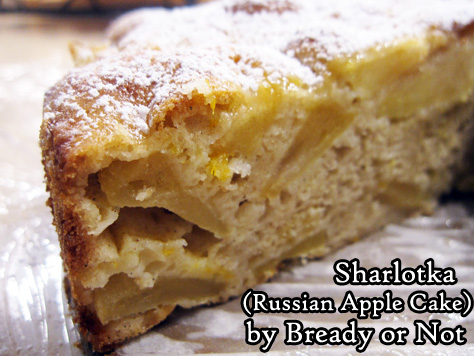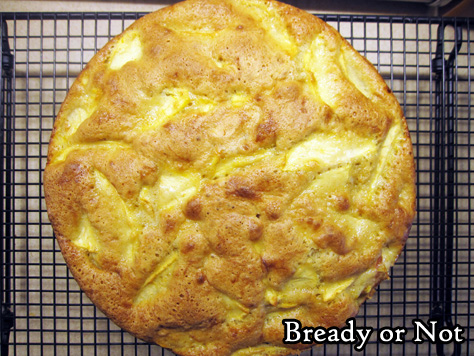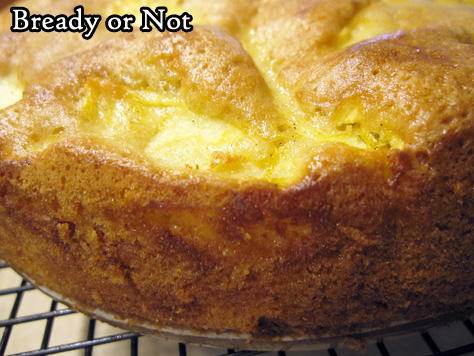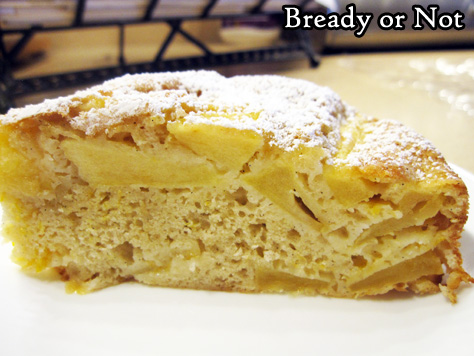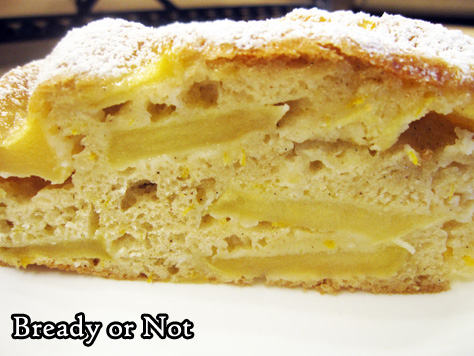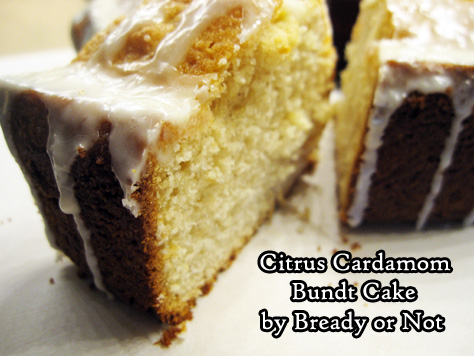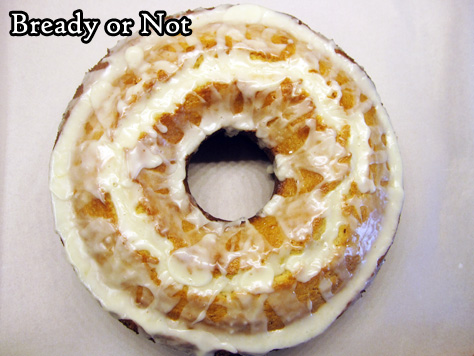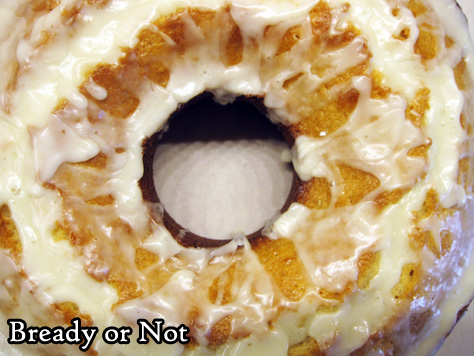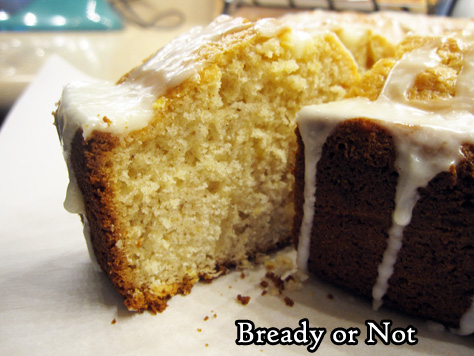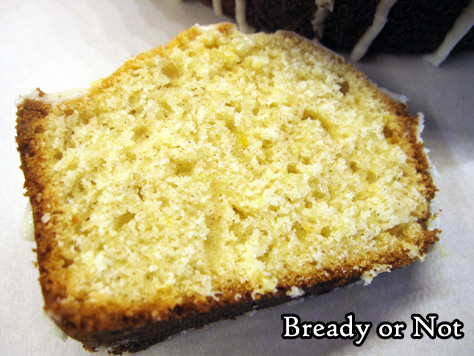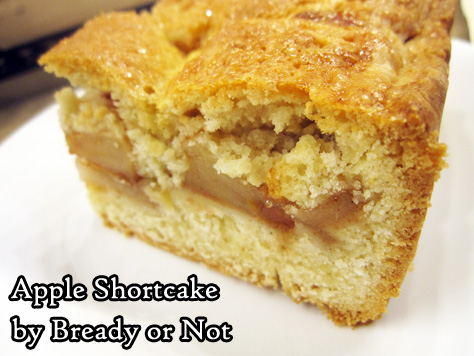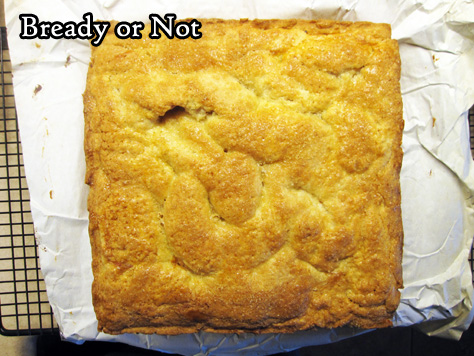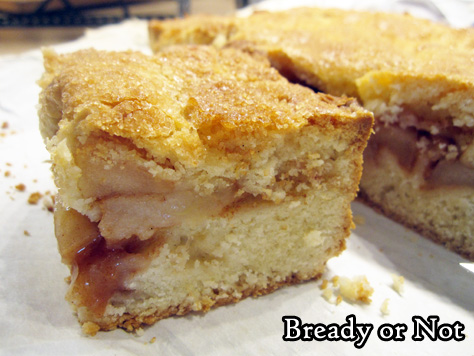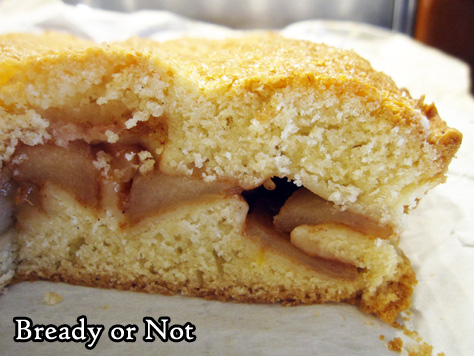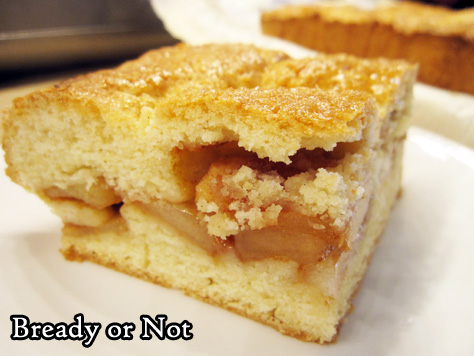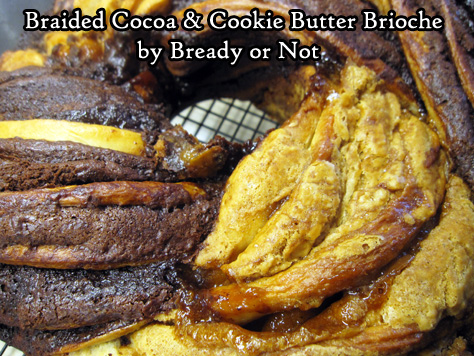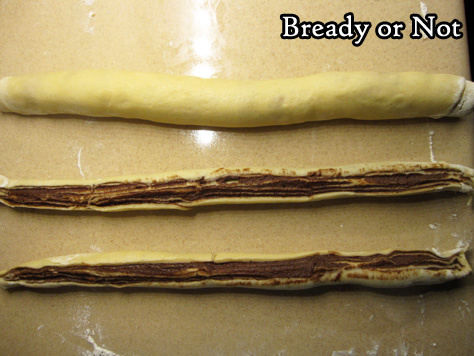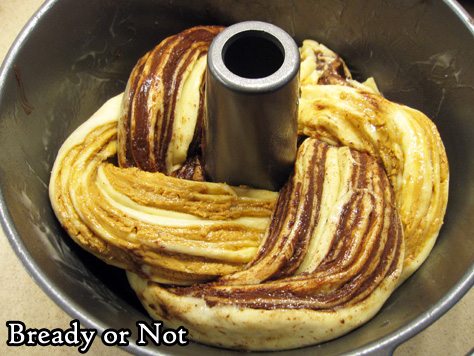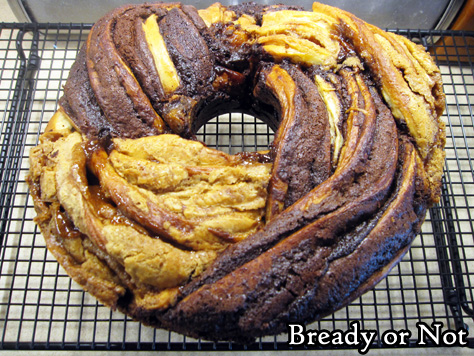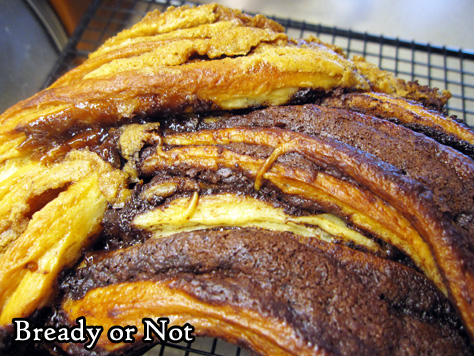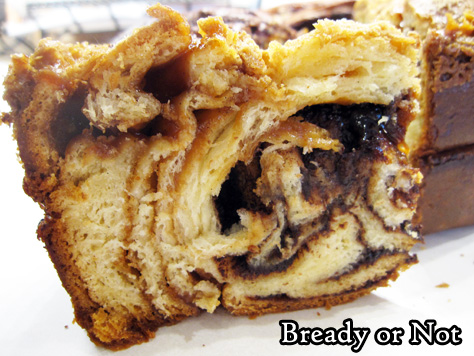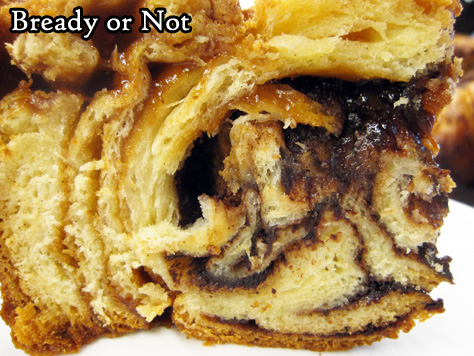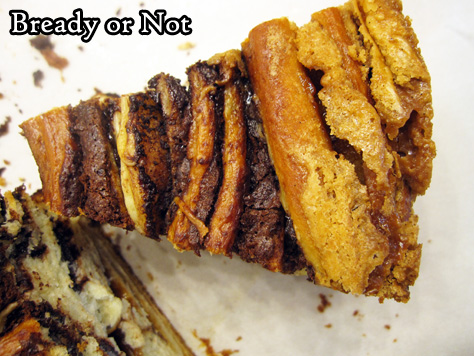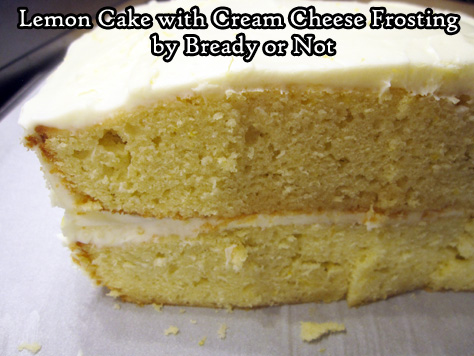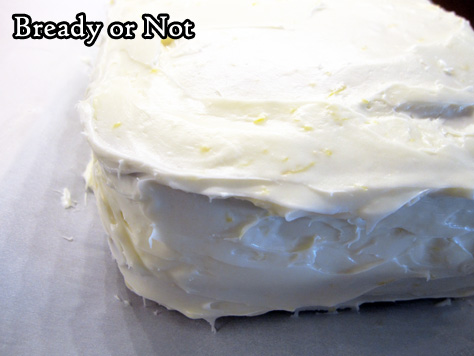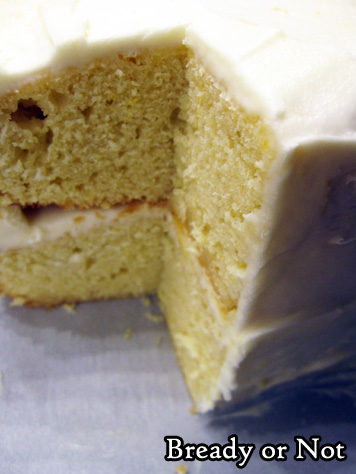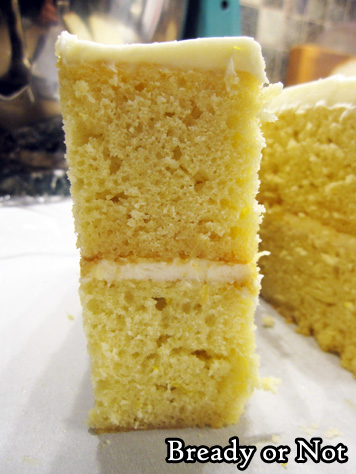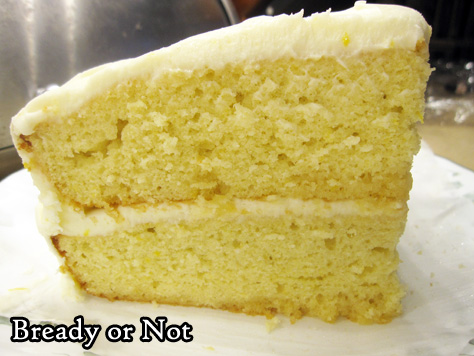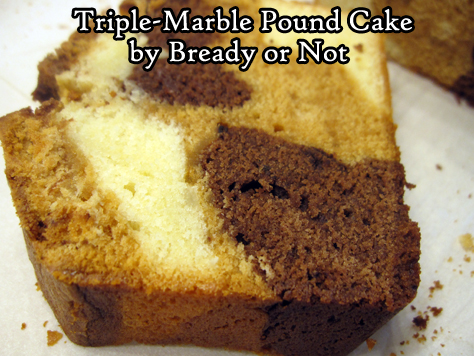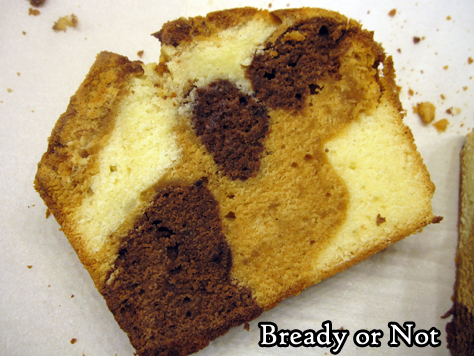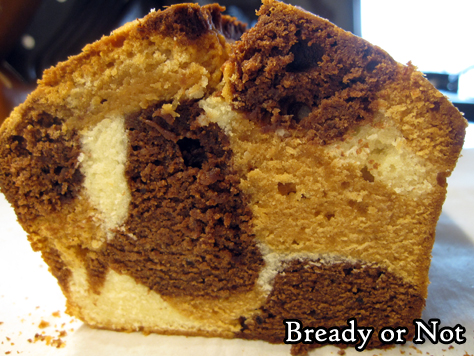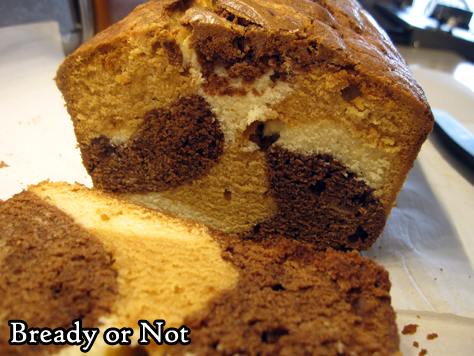Bready or Not: Sharlotka (Apple Cake)
As you might have noticed, I’ve been experimenting with many different kinds of apple cakes over the past while. This Sharlotka has a Russian name but British origins, because that’s the way of the world.
I modified this from a recipe in Bake from Scratch’s October 2020 issue. There, they say the first Sharlotka was a very different kind of cake that was served for Czar Alexander during a London visit–and made by a French chef. Because of course.
The cake that evolved after that became more of a basic apple cake. The batter is minimal, and beaten for a prolonged time to increase volume. It’s pretty much there to act like adhesive for the mélange of apples.
The resulting cake is light and airy. The flavor of the apples really shines through.
This cake is great for a breakfast, snack, or dessert. Eat it on its own, or with some ice cream.
Bready or Not: Sharlotka (Apple Cake)
Equipment
- 9-inch springform pan
- parchment paper
- fine mesh sieve
- offset spatula
Ingredients
- 4 medium apples such as Granny Smith, Ambrosia, Fuji, or Golden Delicious; go for a mix!
- 1 cup plus 1 Tablespoon white sugar divided
- 1 large orange or 1 large lemon zested and juiced
- 4 large eggs room temperature
- 1 1/2 teaspoons vanilla extract or vanilla bean paste
- 3/4 teaspoon kosher salt
- 1 1/4 cups all-purpose flour
- 1 1/2 teaspoons baking powder
- 1/2 teaspoon ground cinnamon
- 1/4 teaspoon ground cardamom
- confectioners’ sugar for dusting
Instructions
- Preheat oven at 350-degrees. Cut parchment to fit the bottom of the springform pan. Grease the pan, then place in parchment round, then spray that as well.
- Peel and thinly slice the apples. In a big bowl, coat the apples with 1 Tablespoon white sugar, the citrus zest, and 2 teaspoons of fresh juice. Set aside.
- In the bowl of a stand mixer with a whisk attachment, beat eggs, vanilla, salt, and remaining 1 cup of sugar at medium high speed for about 7 minutes. It should turn thick and pale, the batter forming ribbons when the whisk is lifted up. Remove bowl from mixer.
- In a medium bowl, combine flour, baking powder, cinnamon, and cardamom. Use a fine-mesh sieve to sift the dry ingredients into the egg mix. Gently fold the flour in until it’s just combined and there are no white streaks.
- Place half the apples in the prepared pan. Pour half the batter over them. Use an offset spatula to work the batter into nooks and crannies. Scatter the rest of the apples on top, followed by the rest of the batter. Again, use the spatula to spread the small amount of batter. For a couple minutes, thump the pan on the counter and tap the sides every now and then to cause bubbles to rise, smoothing batter again after.
- Bake cake. Check it at 30 minutes to see if it is getting too brown; if so, cover it with foil. Continue baking 10 more minutes (40 total) then test the middle with a toothpick. If it comes out clean, the cake is done. Let it cool on a rack for 15 minutes before carefully releasing the sides of the pan.
- Serve the cake warm, at room temperature, or cold from the fridge. Add a dusting of confectioners’ sugar on top for serving; if keeping cake for later, add fresh sugar each time, as it will gradually be absorbed. Store covered in the fridge or at room temperature.
OM NOM NOM!
Bready or Not Original: Citrus Cardamom Bundt Cake
This Citrus Cardamom Bundt Cake beautifully combines orange and lemon with classic spices, creating a cake that tastes and smells divine.
Above all, this cake is imbued with wonderful freshness. Citrus does that, and this cake has a heady dose in the batter as well as the glaze.
Cardamom is one of my favorite spices, one that I crave to use more often. A teaspoon and a half is in this recipe, and as strong as cardamom is, it comes through in a potent, refreshing way.
I made it in a tube pan, because I had a brand new one I needed to try out, but this would also be great in a large bundt pan.
Make this to feed a crowd for breakfast, brunch, or dessert. It would be delicious at any time of day or during any season of the year!
Bready or Not Original: Citrus Cardamom Bundt Cake
Equipment
- tube or bundt pan
- baking spray with flour
Ingredients
cake:
- 3 cups all-purpose flour
- 1 1/2 cups white sugar
- 2 teaspoons baking powder
- 1 1/2 teaspoons ground cardamom
- 1/2 teaspoon ground cinnamon
- 1/2 teaspoon salt
- 1/2 cup orange juice
- 2 large lemons zested and juiced
- 2/3 cup canola oil
- 1 teaspoon vanilla extract
- 3 large eggs room temperature
glaze:
- 1 cup confectioners’ sugar
- 3 teaspoons orange juice
- 1 teaspoon lemon juice from reserved juice
Instructions
- Preheat oven at 350-degrees. Use a floured baking spray on the entire interior of a bundt or tube pan.
- Combine the flour, sugar, baking powder, cardamom, cinnamon, and salt. Pour in the 1/2 cup orange juice, 1/4 cup of the fresh lemon juice, canola oil, all of the lemon zest, vanilla, and eggs. Beat until combined, scraping the bottom of the bowl occasionally.
- Pour the batter into the pan and level it. Bake for 45 to 55 minutes, until a toothpick comes out clean. Let cool in pan for about 15 minutes before inverting onto a wire rack.
- After another 10 minutes, assemble glaze to create a thick, slow-dribbling consistency. Drip it over the warm cake to coat the top and ooze along the sides. Cool cake completely.
- Store cake covered at room temperature. Pieces can be individually sliced to take on the go or to freeze for later.
OM NOM NOM!
Bready or Not: Apple Shortcake
This Apple Shortcake is fussy to make, but the results are absolutely delicious!
I modified this from a recipe in Bake from Scratch, the September/October 2020 issue. There, they describe this style of shortcake as a New Zealand favorite.
Here in American, I grew up with strawberry shortcake (and loved the cartoon and toys for Strawberry Shortcake in my earliest years), and thought of fruit shortcakes as being simply made in individual portions. I was intrigued by this idea of it being like a cake and pie hybrid.
The most annoying thing about the recipe is that I found the dough to be quite sensitive–but this also might be an Arizona problem, as my kitchen year-round is hotter than many get. The good thing is that the recipe makes a lot of dough, so it’s easy to patch any tears or holes with a bit of the leftovers.
The baked shortcake is dense and delicious, with perfectly-spiced apples in a kind of shortbread sandwich.
The shortbread keeps okay at room temperature up to 2 days. If you’re feeding a small crowd, no prob–cut it into individual pieces, encase in plastic wrap, and freeze. It keeps fantastically that way.
Modified a lot from Bake from Scratch, September/October 2020 issue.
Bready or Not: Apple Shortcake
Equipment
- food processor
- food scale
- 9×9 pan
- Rolling Pin
- pastry brush
Ingredients
- 4 cups all-purpose flour plus more for rolling
- 1 cup plus 3 Tablespoons white sugar divided
- 1 3/4 teaspoons baking powder
- 1 1/4 teaspoons plus 1/8 teaspoons kosher salt divided
- 1 cup cold unsalted butter
- 3 large eggs divided
- 3/4 teaspoons almond extract
- 1/2 teaspoon vanilla extract
- 3 large apples such as Granny Smith and Pink Lady
- 1 lemon zested and juiced
- 2 teaspoons corn starch
- 1 teaspoon ground cinnamon
- turbinado sugar optional to sprinkle on top
Instructions
Make the crust
- In the bowl of a food processor, pour in the flour, 1 cup sugar, baking powder, and 1 1/4 teaspoons salt, then pulse until combined. Cut the butter into cubes and add to the bowl, pulsing until the mixture resembles coarse crumbs. Add 2 eggs and the extracts. Pulse to bring the dough together so that it's moist but not sticky; if it doesn't come together, add a small amount of water and pulse more.
- Turn out the dough to press it together. Use a food scale to weigh the dough and divide it in two. Wrap each piece with plastic wrap. Chill in fridge for at least 30 minutes, or up to a few days.
Assemble the shortcake
- Preheat oven at 350-degrees. Let the dough stand at room temperature for about 10 minutes. Sprinkle flour on a flat surface and roll out one portion of dough to make a 13-inch square. Set the pan on top as a guide to cut an even 9×9 square.
- Line pan with foil and apply nonstick spray. Place cut square inside. It’s okay if it tears as its being moved–patch it with fingertips. Pat the leftover dough up the sides of the pan to completely cover, sealing the edges together along the bottom and at the corners. Chill pan during the next step.
- Peel the apples and cut into quarter-inch slices, placing them in a large bowl. Add the lemon zest and 2 teaspoons of juice. Stir to coat apples. Add the cornstarch, cinnamon, remaining 3 Tablespoons sugar, and last bit of salt. Toss everything together, coating the apples. Spread the apples evenly across the bottom of the pan.
- Roll out remaining dough to make a 10-inch square to completely cover the top of the apples. Press overlapping edges to seal together, trimming dough if needed. Lightly beat the remaining egg then brush it over the top crust. Use a fork to poke the crust all over to create vents. If desired, sprinkle turbinado sugar across the crust.
- Bake until crust is golden brown, about 50 minutes to 1 hour. The apples should be tender if poked with a toothpick. Let cool in pan for at least an hour. Use foil to lift shortcake onto a cutting board for easy slicing.
- Store cake in sealed container at room temperature for up to 2 days. It can also be cut into individual slices and frozen for later enjoyment.
OM NOM NOM!
Bready or Not: Braided Cocoa and Cookie Butter Brioche
This Braided Cocoa and Cookie Butter Brioche is stunning in appearance and taste, so be warned: there are more pictures than usual for this post, including some process photos.
When I set out to rewrite the original recipe, featured in the January/February 2019 issue of Bake from Scratch, I knew this bread would be time-consuming. Intimidating, even.
The braiding process, shown here, had me worried to start, but that turned out to not be so bad after all.
What ended up being the most tedious aspect was all the necessary dishwashing between the various stages! This recipe would be a great time to have some helpful assistants around.
The original recipe used special black cocoa paired with peanut butter. I went with normal baking cocoa (Penzey’s), which is less dramatic in color but great with flavor, and my stalwart baking favorite, cookie butter.
Despite my evangelizing, some people are always meeting cookie butter for the first time. It’s found in jars near the nut butters in stores. Trader Joe’s carries it under the name Speculoos. The other major brand is Biscoff. It tastes like spice cookies pureed in oil, because that’s exactly what it is.
It’s also incredible to bake with because it can even make cookies taste inherently more cookie-like. Here, when it’s used with chocolate, cocoa, and fresh bread, it’s truly amazing.
During baking, I found the exposed swirls of cookie butter actually caramelized, creating a wonderful crunch in the same bite as tender enriched bread. That, along with chocolate?
Oh wow. Oh wow.
Bready or Not: Braided Cocoa and Cookie Butter Brioche
Equipment
- stand mixer
- food scale
- Rolling Pin
- uneven spatula
- bench knife
- pastry brush
Ingredients
- 1 cup warm milk (105-110-degrees F)
- 2 1/4 teaspoons active dry yeast
- 2 large eggs room temperature
- 1/2 cup unsalted butter (1 stick) melted
- 4 teaspoons vanilla extract or vanilla bean paste, divided
- 4 1/2 cup all-purpose flour plus more if needed
- 1/4 cup white sugar
- 1 Tablespoon kosher salt
- 3/4 cup plus 2/3 cup confectioners' sugar divided
- 2/3 cup creamy cookie butter
- 3 Tablespoons unsalted butter melted
- 1/2 cup unsalted butter softened
- 1/2 cup semisweet chocolate melted
- 1/3 cup cocoa powder sifted
- 1 large egg white
- 1 Tablespoon water
Instructions
- In a stand mixer with a paddle attachment, stir together warm milk and yeast, letting it stand about 5 minutes to get foamy.
- Mix in the eggs, 1 stick melted butter, and 2 teaspoons vanilla. Follow up with the flour, sugar, and salt, beating until combined. Switch to the dough hook and beat for about 4 minutes, until smooth.
- Use nonstick spray on a large bowl. Lightly flour a flat surface and turn out the dough to form it into a round. Place it in a bowl, rotating it to grease the entire surface. Cover and let rise for about 1 hour, until it doubles in size.
- Clean everything and return to the stand mixer. Using the paddle attachment, beat the 2/3 cup confectioners’ sugar with the cookie butter, 1 teaspoon vanilla, and 3 Tablespoons melted butter, until smooth. Transfer the mixture to another bowl. set aside.
- Clean the mixer and paddle attachment again. Beat the final stick of softened butter, the melted chocolate, cocoa, remaining 3/4 cup confectioners’ sugar, and last 1 teaspoon vanilla, until smooth. Set aside.
- Lightly flour a flat surface again. Punch down the dough and turn it onto the surface. Use a food scale to divide the dough in half. Stash one half back in the bowl for now, covered to prevent drying. Roll the other half into a 20 by 9 rectangle. Use an uneven spatula to spread the cookie butter filling onto the dough, up to 1/2-inch of the edges all the way around. Starting on a long side, tightly roll up the dough, pinching the seam to seal. Set aside with the seam faced down.
- Roll out the other dough in the same way, this time spreading on the chocolate-cocoa filling. Roll it up as well, placing the two dough rolls side by side. Use a bench knife to cut each roll in half, lengthwise. With the multi-layered middles facing up, twine the strips together.
- Apply nonstick spray on tube pan. Lift braid into the pan and tug it to form a complete circle, tucking the ends beneath. Cover the bread and let it rise in a warm spot until it’s puffed, about 30 minutes.
- Preheat oven 350-degrees.
- In a small bowl, whisk together the egg white and water. Brush the top of the dough, touching the cookie butter strands first, then the chocolate; this will prevent the chocolate from smearing too much.
- Bake for about 50 to 55 minutes, covering the bread with foil halfway through to prevent too much browning. When done, the top should be golden and an instant-read thermometer should be above 190-degrees.
- Let cool in pan for about 15 minutes. Turn out onto a plate, then tip it back onto a rack to completely cool, top-up.
- The bread is best eaten within a day, but it can also be sliced up and frozen in pieces. It'll thaw later and taste beautifully fresh! Eat at room temperature or slightly warmed.
OM NOM NOM!
Bready or Not: Lemon Cake with Cream Cheese Frosting
This Lemon Cake with Cream Cheese Frosting isn’t fancy. It’s a 9×13 cake cut in half and stacked. It has curves and straight edges. It also tastes amazing.
This is also an ideal cake for lemon-lovers. Two lemons are zested and juiced, their flavor infusing both the batter and frosting.
The cream cheese frosting here is an absolute classic, too. This is a recipe where you definitely want to lick the beaters and the bowl afterward!
I actually debated whether or not to post the cake on Bready or Not because it is so basic. After a lot of thought, though, I realized that simplicity is one of the perks.
It may not win awards for looks, sure. But does it taste good? YES.
Modified from Food & Wine Magazine January 2021.
Bready or Not: Lemon Cake with Cream Cheese Frosting
Equipment
- 9×13 pan
- uneven spatula
- cooling rack
- chopstick or skewer
- hand mixer
- parchment paper
Ingredients
Lemon Cake
- 1 3/4 cups white sugar
- 2 large lemons zested and juiced, to use for cake and frosting
- 3/4 cup extra virgin olive oil
- 4 large eggs room temperature
- 1 cup milk
- 1 teaspoon vanilla extract
- 3/4 teaspoon fine sea salt
- 3 cups all-purpose flour
- 1 1/2 teaspoons baking powder
- 3 Tablespoons honey
Cream Cheese Frosting
- 8 ounces cream cheese (1 box) softened
- pinch fine sea salt
- 1/2 cup unsalted butter (half stick) softened
- 3 cups confectioners’ sugar
Instructions
Make the lemon cake
- Preheat oven at 350-degrees. Line a 9×13 pan with foil and apply nonstick spray.
- Mix together the white sugar and 1 Tablespoon of the lemon zest; reserve remaining zest for the frosting. Using fingertips, for about a minute rub zest into sugar to deploy the inherent oils. Whisk in the olive oil followed by the eggs. Add the milk, vanilla, and salt. Keep beating until the sugar is dissolved.
- Beat in the flour and baking powder until just combined, making sure to scrape the bottom of the bowl. Pour batter into the cake pan.
- Bake for 30 to 35 minutes, until the middle passes the toothpick test. Let cake cool in pan about 10 minutes. In a small bowl, whisk together the honey and 3 Tablespoons of the lemon juice until smooth.
- Invert the cake onto a large cooling rack. Stab cake all over with chopstick or skewer. Set a cookie sheet beneath the rack. Drizzle or brush the honey-lemon mix all over the cake. Let cool for about an hour.
Frosting
- Combine cream cheese, salt, the rest of the lemon zest, and a Tablespoon of lemon juice; use rest of juice otherwise. With a hand mixer, beat on medium-high until smooth, about 30 seconds. Add the butter and beat until pale and fluffy, about a minute.
- Reduce the speed and gradually add the confectioners’ sugar. Once it’s all in, increase the speed to high and beat until fluffy, about 2 minutes.
- Transfer the cake to a parchment paper-lined cookie sheet. Use an uneven spatula to spread 1 1/2 cups frosting all over the top of the cake. Place cake in fridge to chill for 15-30 minutes. Once frosting has hardened. Slice in half crosswise and stack the halves. Spread the remaining frosting on the top and sides of cake, getting all of the odd angles, nooks, and crannies.
- Refrigerate cake, uncovered, at least 30 minutes before serving. For longer than that, cover with plastic wrap; it’ll keep well in the fridge for up to 3 days, and can also be frozen in individual slices. Serve cake right from fridge.
OM NOM NOM!
Bready or Not: Triple-Marble Pound Cake
The Triple-Marble Pound Cake is tender, soft, and has three incredible complementary flavors combined in one cake. It’s not hard to make, either, though it does dirty a few extra dishes.
Oh yes, and it’s pretty, too. The interior reminds me of a calico cat!
Something I really like about this recipe is that it is no-frills. The flavors are all built into the dough itself. There’s no need for frosting or glaze. The end result is a nice, tidy slice. You can throw it in a sandwich bag or some plastic wrap, and this is great as a to-go snack of treat. It might get crushed, but it won’t melt (and that is always a concern in Arizona!).
The cake keeps well, too. Store it sealed at room temperature for up to four days. It’s also fantastic to freeze in slices to enjoy later.
Greatly modified from Bake from Scratch Sep/Oct 2020.
Bready or Not: Triple-Marble Pound Cake
Equipment
- 9×5 loaf pan
- parchment paper
- food scale
Ingredients
- 3/4 cup unsalted butter (1 and a half sticks) softened
- 1 1/2 cups white sugar
- 3 large eggs room temperature
- 1 3/4 cups all-purpose flour
- 1/2 teaspoon kosher salt
- 1/4 teaspoon baking powder
- 1/2 cup vanilla Greek yogurt or sour cream
- 1/4 cup jarred caramel or dulce de leche
- 1/3 cup dark chocolate melted and cooled slightly
- 1 Tablespoon Dutch-process cocoa powder sifted
- 2 teaspoons vanilla extract
Instructions
- Preheat oven at 300-degrees. Cut a piece of parchment to fit like a sling inside the pan, extending up both long sides. Apply butter or nonstick spray in the pan, then set the parchment inside and spray it again.
- Beat together butter and sugar until fluffy. Add eggs, beating well after each addition.
- In a separate bowl, combine the flour, salt, and baking powder. Gradually add the dry ingredients in with the wet, adding in the yogurt/sour cream as well.
- Either by using a food scale or by eyeballing, divide the dough into three roughly equal portions.
- If the caramel/dulce de leche is stiff, microwave briefly in a microwave-safe bowl to make it looser. Mix that into one portion of dough.
- Add the cocoa powder with the melted chocolate, and fold that into a second portion of dough until the color is even throughout.
- To the third portion, mix in the vanilla to completely incorporate.
- Set a tablespoon with each portion. Scoop vanilla and chocolate to form a checkerboard-like formation in the bottom of the loaf pan. Add scoops of caramel dough sporadically over top. Tap pan to settle the dough. Repeat, mixing up the pattern so that different colors are near each other, tapping the pan on occasion. Once all of the dough is in the pan, use a butter knife to gently swirl for an extra marbling effect on the top. Tap pan again to level and work out bubbles.
- Bake for 1 hour 40 minutes. Check the middle with a toothpick. If it’s still wet, bake longer, checking every few minutes for doneness. Once it passes the test, let cool on stove top for 10 minutes, then use the parchment sling to lift the loaf onto a rack to cool completely.
- Cake can be served warm or at room temperature. It will keep for up to 4 days in a sealed container. It can also be frozen in slices for later enjoyment.




